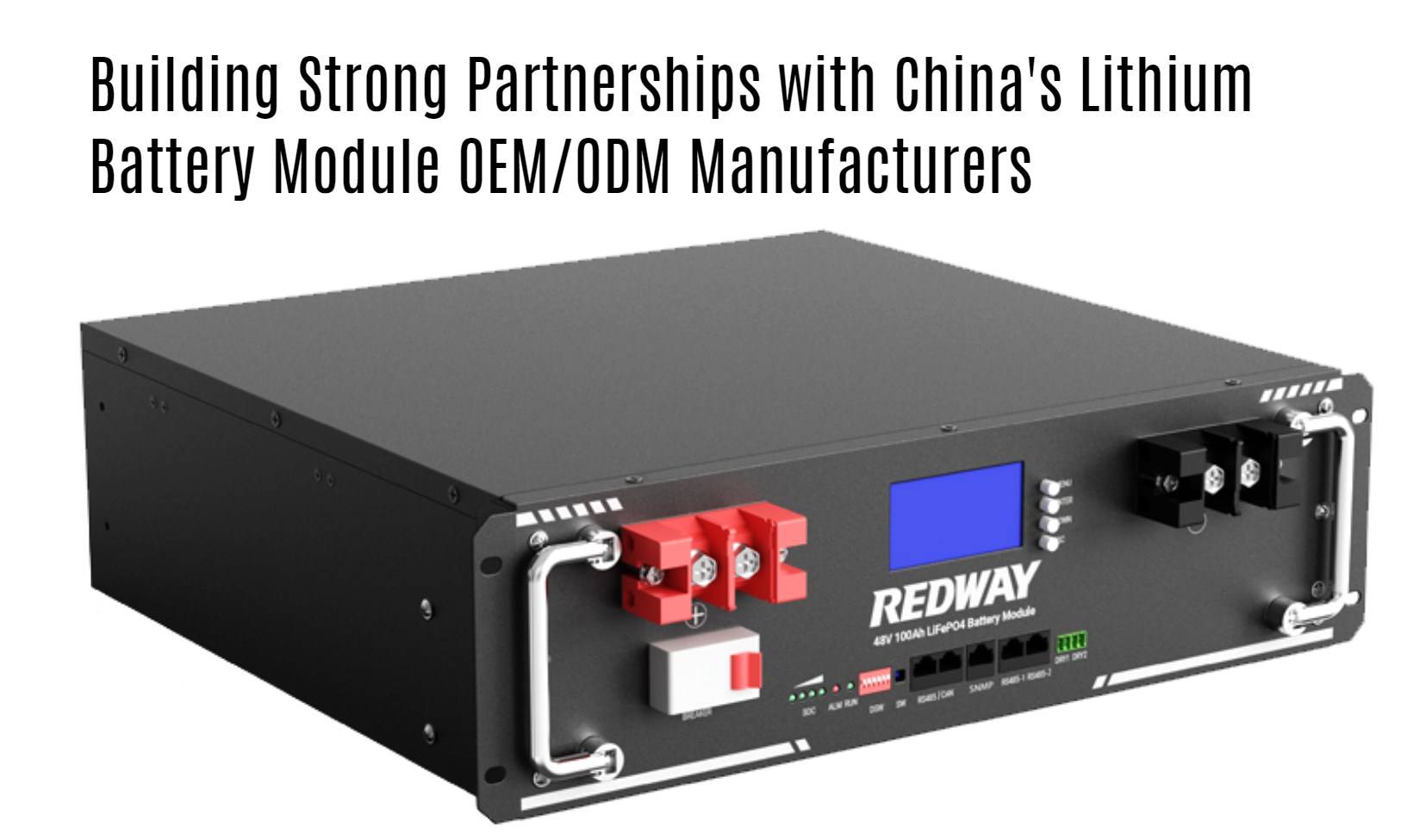In today’s rapidly advancing technological landscape, lithium battery modules have become indispensable across various industries, from electric vehicles to renewable energy solutions. As the global demand for high-performance battery solutions grows, so does the need for robust partnerships with OEM (Original Equipment Manufacturer) and ODM (Original Design Manufacturer) suppliers in China. Establishing a strong, mutually beneficial relationship with these manufacturers can be the key to securing a competitive edge in the market. This article explores how to build and maintain successful partnerships with China’s lithium battery module OEM/ODM manufacturers, emphasizing strategic approaches and key considerations for achieving optimal outcomes.
Understanding the OEM/ODM Landscape in China
China’s Dominance in the Battery Industry
China has firmly established itself as a global leader in the lithium battery manufacturing industry, driven by its extensive resources, technological advancements, and scale of production. With numerous OEM and ODM players operating in the region, it is crucial for businesses to comprehend the nuances of working with these manufacturers to leverage their strengths effectively.
OEM vs. ODM: Key Differences
- OEM (Original Equipment Manufacturer): OEMs primarily focus on producing products based on the client’s specifications and design. They offer manufacturing expertise and facilities but typically do not contribute to the design or development phase.
- ODM (Original Design Manufacturer): ODMs, on the other hand, provide both design and manufacturing services. They offer ready-made solutions and can collaborate on product development, which is advantageous for companies looking to innovate or enter the market with unique products.
Strategic Approaches to Building Strong Partnerships
1. Conduct Thorough Research and Due Diligence
Before entering into a partnership, it is essential to conduct comprehensive research on potential OEM/ODM partners. Evaluate their production capabilities, quality control processes, and reputation in the industry. Key factors to consider include:
- Certifications and Standards: Verify if the manufacturer adheres to international standards such as ISO 9001, which reflects their commitment to quality management.
- Technical Expertise: Assess their technical capabilities and experience in producing lithium battery modules that meet specific performance and safety standards.
- Production Capacity: Ensure that the manufacturer has the capacity to meet your volume requirements and delivery schedules.
2. Establish Clear Communication Channels
Effective communication is pivotal in fostering a successful partnership. Establish clear and open channels for regular updates and discussions. Key aspects include:
- Point of Contact: Designate a primary contact person from both sides to facilitate seamless communication.
- Language Barriers: Consider language differences and ensure that both parties have a mutual understanding of technical terms and specifications.
- Documentation: Maintain detailed documentation of all agreements, including technical specifications, quality standards, and delivery timelines.
3. Define Mutual Goals and Expectations
Clearly outline the goals and expectations of the partnership from the outset. This includes:
- Product Specifications: Define the exact requirements for the lithium battery modules, including capacity, performance, and design.
- Quality Standards: Agree on quality benchmarks and inspection processes to ensure that the final products meet your standards.
- Timeline and Milestones: Establish a timeline with key milestones to track progress and address any issues promptly.
Key Considerations for a Successful Partnership
1. Quality Assurance and Control
Quality assurance is critical in the lithium battery industry. Ensure that your OEM/ODM partner has robust quality control measures in place. This involves:
- Testing and Validation: Implement rigorous testing procedures to validate the performance and safety of the battery modules.
- Compliance with Regulations: Ensure that the products comply with relevant industry regulations and standards, such as RoHS (Restriction of Hazardous Substances) and UN38.3 for lithium battery transportation.
2. Flexibility and Adaptability
The ability to adapt to changing market demands and technological advancements is crucial. Choose a partner who demonstrates:
- Innovation Capability: A willingness to invest in research and development to enhance product offerings and integrate new technologies.
- Flexibility in Production: The ability to adjust production volumes and adapt to new designs or specifications as needed.
3. Cost Management
While cost is a significant factor, it should not compromise quality. Focus on:
- Transparent Pricing: Ensure that the pricing structure is clear and includes all potential costs, such as tooling, labor, and materials.
- Long-Term Value: Evaluate the overall value proposition, including reliability, support, and long-term benefits, rather than just the initial cost.
Building Long-Term Relationships
1. Regular Performance Reviews
Conduct regular performance reviews to assess the effectiveness of the partnership. This involves:
- Feedback Mechanisms: Establish feedback mechanisms to address any issues and implement improvements.
- Performance Metrics: Develop metrics to evaluate performance in areas such as delivery times, product quality, and customer service.
2. Collaborative Innovation
Foster a collaborative environment to drive innovation and continuous improvement. Engage in joint research and development projects to explore new technologies and product enhancements.
3. Strengthen the Partnership
Build a strong, long-term relationship by:
- Investing in the Partnership: Show commitment by investing in the relationship and working together to achieve mutual goals.
- Celebrating Successes: Recognize and celebrate milestones and achievements to reinforce the positive aspects of the partnership.
Conclusion
Establishing a strong partnership with China’s lithium battery module OEM/ODM manufacturers requires strategic planning, effective communication, and a focus on mutual goals. By understanding the OEM/ODM landscape, defining clear expectations, and maintaining a commitment to quality and innovation, businesses can build successful, long-lasting relationships with their manufacturing partners. In doing so, they can position themselves for success in the competitive and rapidly evolving lithium battery market.




